Despite its name, this bird packs a big personality and plays a vital role in the ecosystem.
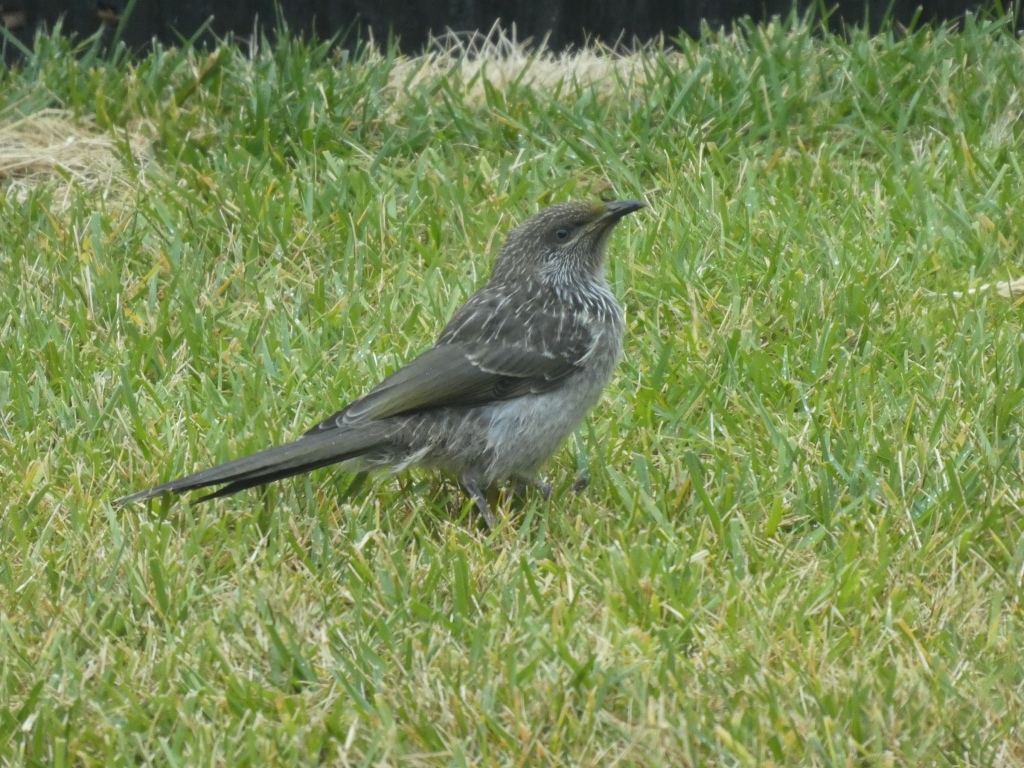
The little wattlebird is in reality, not so little. It’s a medium-sized honeyeater (about 33cm in length) with a dark brown head and back contrasting with white streaked underparts and a rufous patch on the wings which is more noticeable in flight. There are three wattlebirds in Australia, the red, yellow and little wattlebird, with the latter being the smallest.
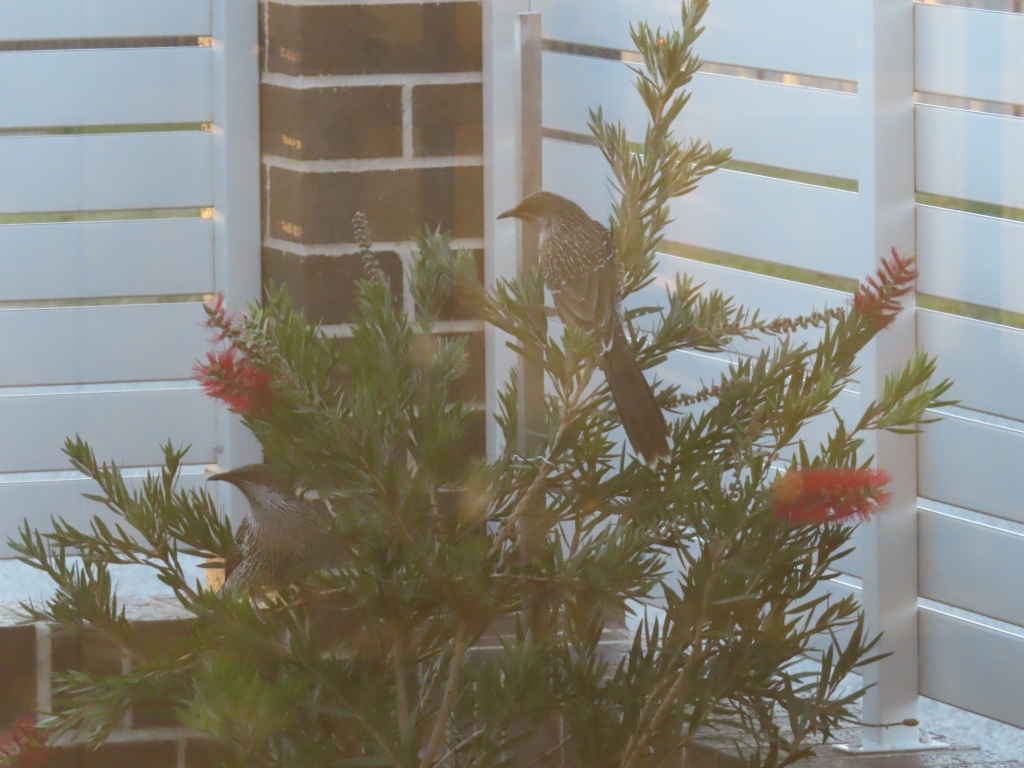
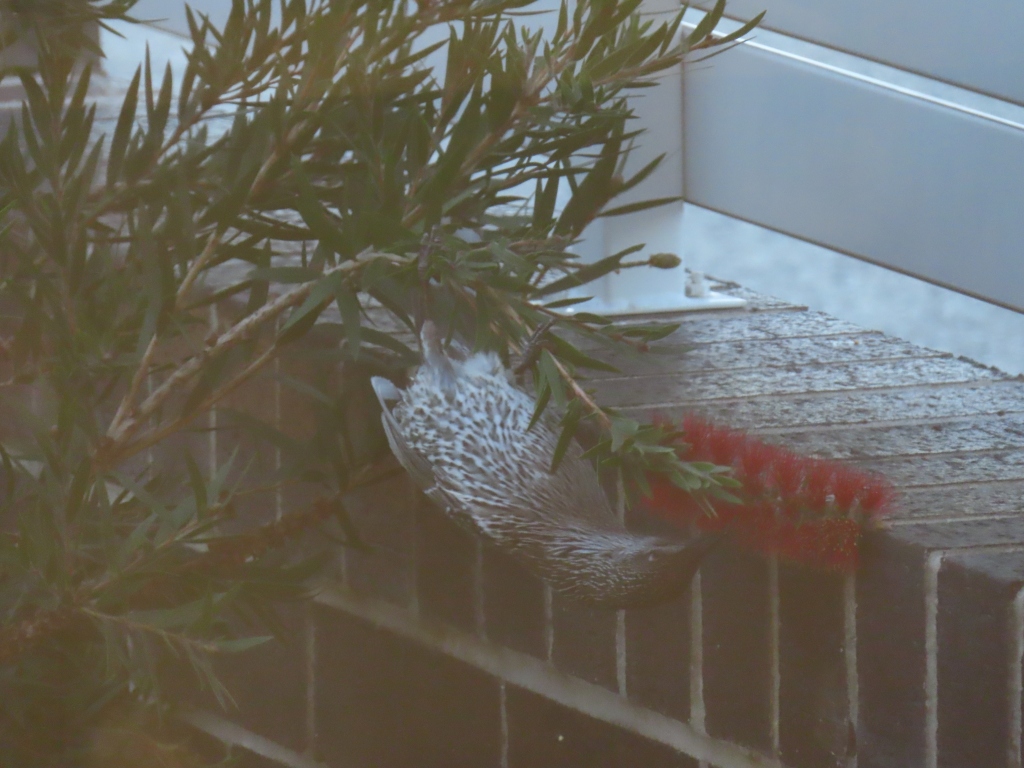
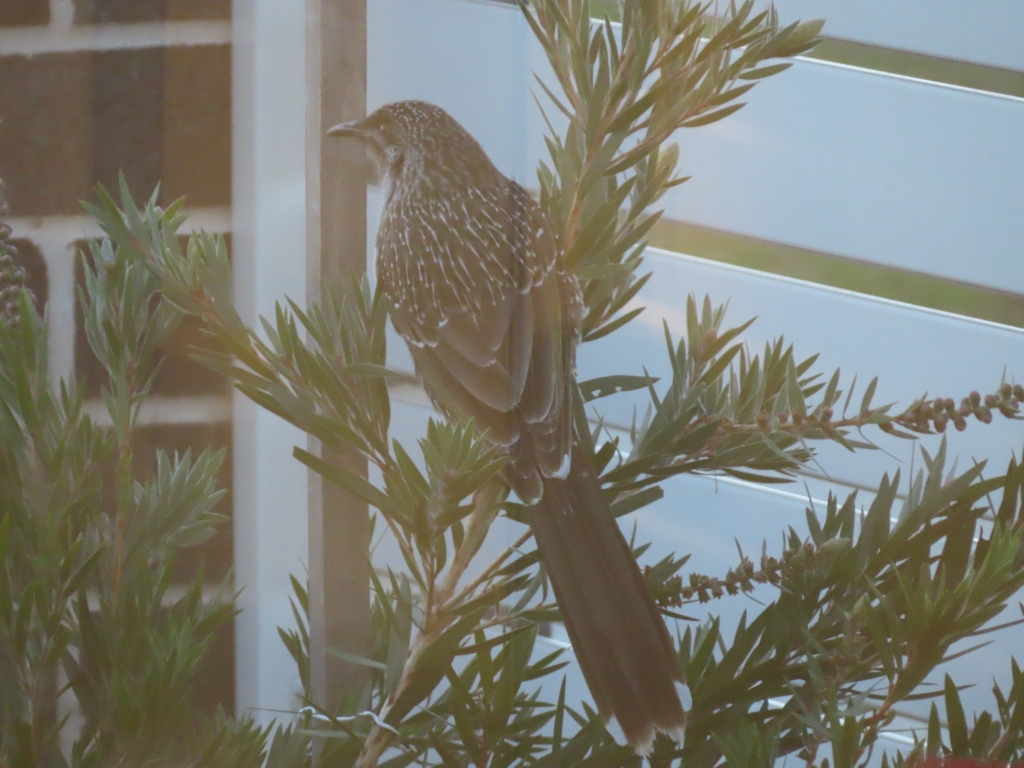
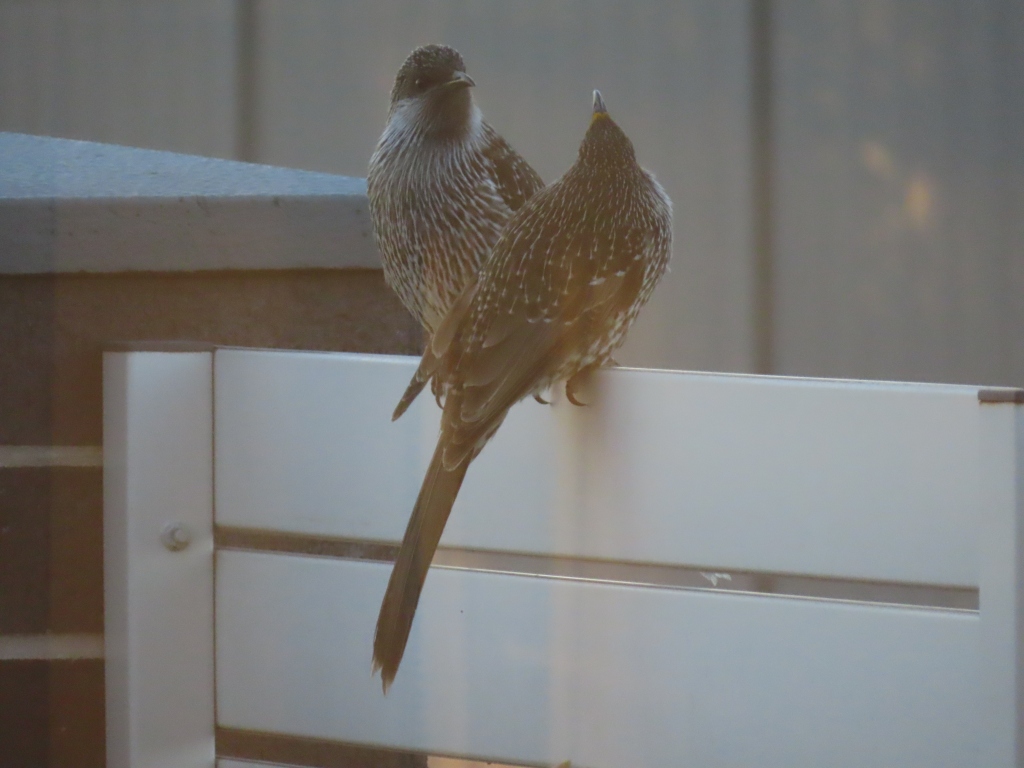
The little wattlebird is a frequent visitor to gardens and backyards, especially those with flowering native plants. They’re quite vocal, with a repertoire that includes loud calls and melodic whistles. They are very loud at dawn, and are sometimes referred to as the five o’clock bird, not just for waking people up early, but their call sounds like they are saying “five o’clock”. Some people think the bird call sounds like they are saying “fetch the gun”. What do you think?
The little wattlebird is a true nectar enthusiast with a long, brush-tipped tongue perfectly adapted for reaching deep into flowers and extracting the sweet liquid from the blooms of banksias, grevilleas, and other native flowers.
They also enjoy a varied diet of insects, berries, and even the occasional seed. And their acrobatic insect catching skills are fascinating to watch.
There is a large group of little wattlebirds that live in the reserve opposite my house, so I am regularly seeing them (and hearing them!). Since I have planted some native shrubs in my garden, I am getting visited everyday by the local wattlebirds feeding on the native flowers, and I have been able to watch them raise young ones several times.
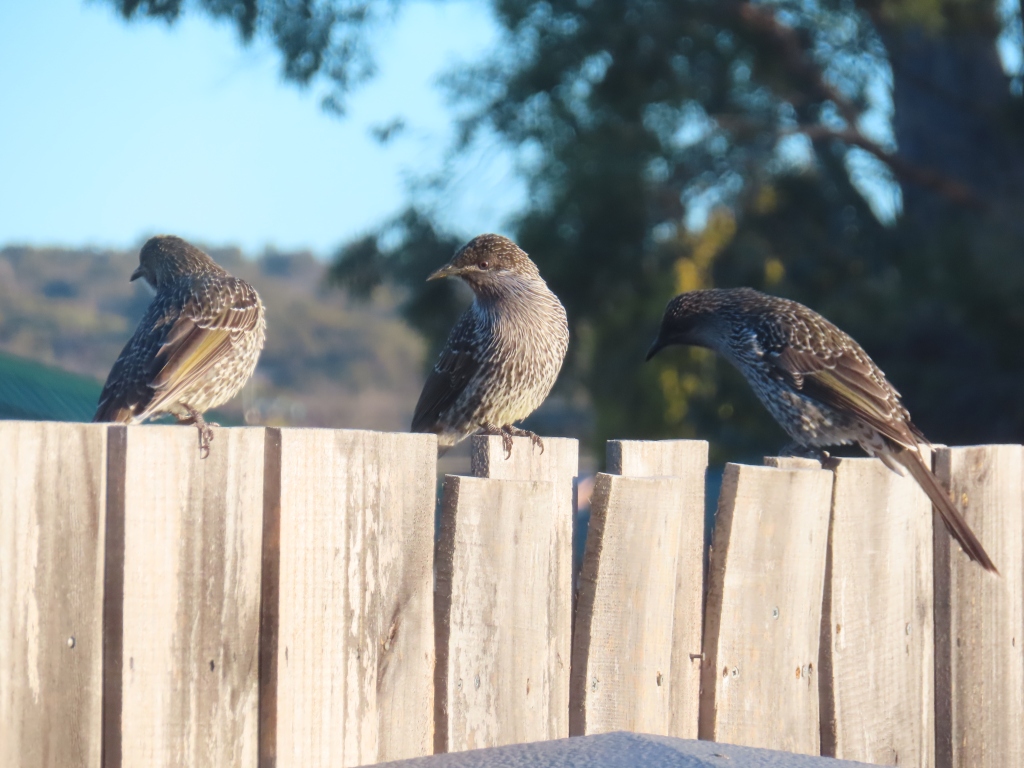

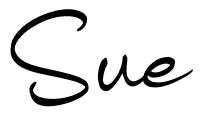
Lovely post Sue of this active honeyeater. Enjoyed your videos and its call, my brother calls it the PooCack bird due to its call, but having asked me he now knows its name. They put their whole body into the call since they use all their 4 air sacks at once to call through their syrinx. The little part of its name does not refer to it’s body size so much as to the size of its wattle which is so small it is not visible. It resembles the Western Wattlebird of WA but it has a red eye and not the blue. You are blessed with our largest honeyeater in Tassie, with the Yellow Wattlebird which has the longest of all wattles as you would know. We did a lot of searching for that bird when we were down their last, but our best discovery was in a bird show at I think the Tasmanian Devil Unzoo.
LikeLiked by 1 person
Thanks Ashley. Yes, that yellow wattlebird is very hard to find. I’ve been in Tassie now for 6 years and have only seen it 3 times.
LikeLiked by 1 person
Thanks for a lovely post, Sue! I enjoyed all the info as well as the pictures. What do I think the Little Wattlebird’s call sounds like? “Look OUT, look OUT” with a warning rattle every now and then. 😊
Cheers
Sarah
LikeLiked by 1 person
Thanks Sarah. “Look out” also fits with this bird’s call, it’s certainly an alarm to take notice of.
LikeLike